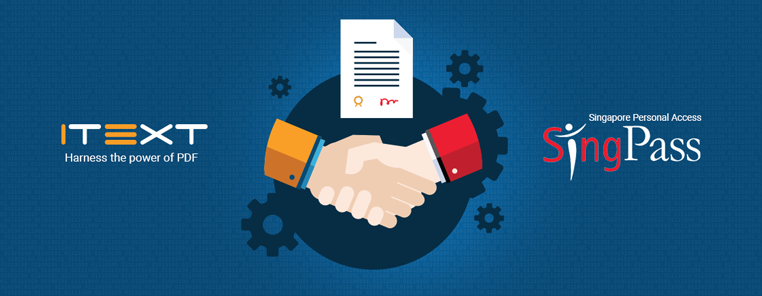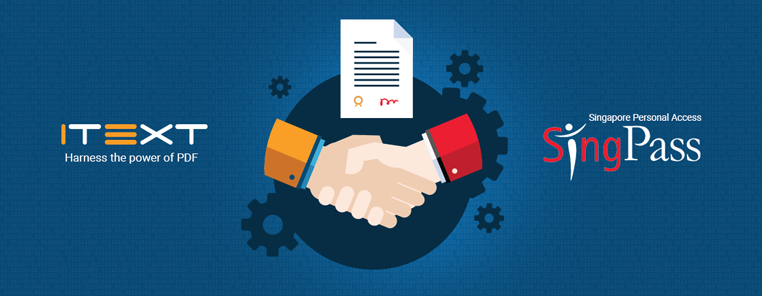
This article is an integral part of a larger blog post series across several weeks on System Integrators and National Digital Identity Programs. This series discusses the opportunities for System Integrators to create new business and integrate the digital document workflows of their customers, in the private and public sectors, with these national programs.
Belgium is known for having its fair share of governments and complex state structures. No one can deny that. Consequently, bureaucratic document workflows benefit from complex state structures. The existence and need of huge amounts of official paper documents and forms often symbolize this.
But change has been happening for some time now. Belgium does have The Administrative Simplification Service (DAV) which has worked an number of projects, including the modernization of the Civil Registry to implement a fully digital civil registry deeds process. Not so long before, Belgian citizens had to go to, or contact, their place of birth to request certain official documents. This digital transformation project according to research from UHasselt determined that about 30 million euros in administrative costs per year were saved across all citizens, companies and administrations after an investment of 6 million euros. In 2019 (since March) 401,500 deeds were produced and deposited as PDF documents.
30 million euros in administrative costs per year were saved across all citizens, companies and administrations after an investment of 6 million euros. In 2019 (since March) 401,500 deeds were produced and deposited as PDF documents.
This, rightfully so, grabs the attention of other parties both in the private and public sectors. System Integrators can benefit strongly from scenarios like these. Converting document workflows into digital PDF alternatives is a sound investment for any organization. System Integrators with a strong knowledge of PDF generation and manipulation stand a good chance of becoming “preferred”.
3 important points of focus
1. High volume digital document generation
Wherever there is paper involved while handling documents within an organization, chances are many of those document management flows contain the printing, manual signing, scanning and processing of paper documents. This signals there’s a big opportunity for the transformation into a fully electronic and automatic alternative. One good example is where digital signing a PDF versus the manual signing of a paper agreement could strongly increase in the amount and speed of new agreements being signed and received at any organization. Simply thanks to becoming more user convenient.
Projects as the one for the Belgian Civil Registry had to produce hundreds of thousands of digital documents in PDF format. A low code tool like iText DITO® offers the ability to create unique templates and merge data from many different sources into a single, attractive looking and secure PDF document. Document generation on a huge scale, such as the 401,500 deeds mentioned earlier, becomes especially efficient when these templates can be created and maintained by anyone, without requiring a developer. Thanks to iText DITO’s WYSIWYG editor, combined with its powerful formatting and data binding capabilities, this is now possible.
2. Digital signing and securing PDF documents
Consider, for example a regular person, entering into a contract with the electricity company, entering into a lease, entering into an agreement with an Interim office, signing a registered shipment, and so on. Digital signing ensures this person no longer has to print, sign, scan and forward these documents. This person saves a lot of time and saves on paper, which is also good for the environment.
When we look at the same scenarios from the private business or public institution side, the time saving which can be achieved is enormous. Yet, there are still too many organizations who have not digitally transformed their workflows, and thus cannot take advantage of the benefits of digital workflows, such as time saved, more secure, traceable, avoiding human mistakes, etc.
3. National digital identity programs increase the need for digital document workflows
Many of the known National Digital ID programs are no longer limited to a sleek looking physical ID card with a computer chip. They are fully-fledged secure digital gateways with APIs to hook up to, often with mobile-first authentication. Eventually, these will allow private businesses or organizations to link up with their respective national platforms and use personal data of citizens, realizing new eco-systems.
Events like the global COVID pandemic could increase the pace of launching new electronic document workflows. People have now discovered the possibilities of conducting business online, and remote working.
As National Digital Identity Programs are increasingly being deployed worldwide, adoption rates for digital signatures are expected to rise. The popularity of apps like ItsMe® in Belgium or SingPass in Singapore for example, require every organization, public or private, to consider offering digital signing capabilities for documents. If they fail to implement this in the near future, they risk becoming ignored over a direct competitor who does offer the possibility.
Conclusion
System Integrators have a huge opportunity to create new business by proactively talking to their customers and introducing them to digital signing document solutions or high-volume document generation. When being challenged on the “why”, the answer is simple. A National digital ID allows citizens to very easily authenticate themselves and log into any online customer environment. Once logged in, customers will expect that environment to contain every single one of their documents, and be readily available in a digital, and shareable format. Whether they be agreements, invoices, quotes, reports, etc.
“Preferred” therefore could mean, System Integrators who have the full knowledge of national digital identity technology and PDF creation or manipulation.
We are publishing a series of blog on a weekly basis aimed at System Integrators, introducing 5 important key reasons why SIs are, and should be, preparing for a surge in National Digital Identity programs and why it will impact document workflows at every private business or governmental institution.
If you want to follow the series, we've listed the articles to be expected below. Or you can read the case study from DXC, a renowned global System Integrator.
System Integrator Series
- Introduction:
Introducing 5 reasons why a global surge in National Digital Identity Programs requires Digital Document Workflow reviews.
- Reason 1:
Enormous new market potential for both SIs and Customers due to National Digital Identity Programs. - Reason 2:
High adoption rates for National Digital Identity Programs cause high demand for digital document workflow integrations. - Reason 3:
Strict screening and lengthy application procedures for National Digital Identity Program integrations. - Reason 4:
Proactive vs reactive behavior with National Digital Identity Program integrations. - Reason 5:
Digital Signing features in National Digital Identity Programs affect document workflows. - Conclusion:
National Digital Identity Program business opportunities.


